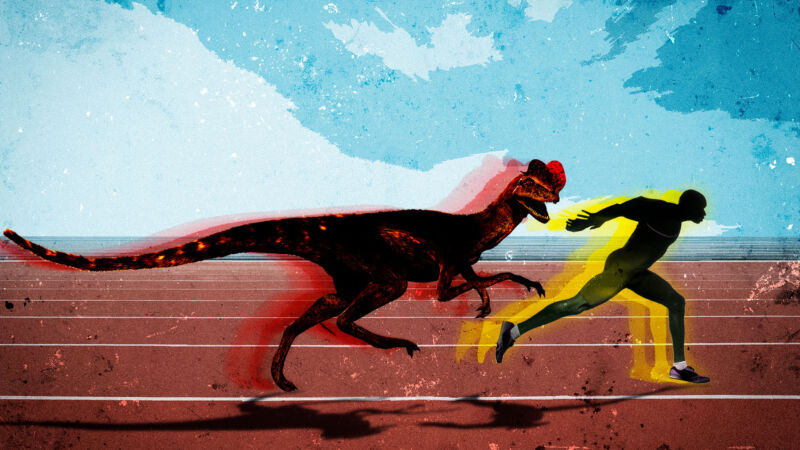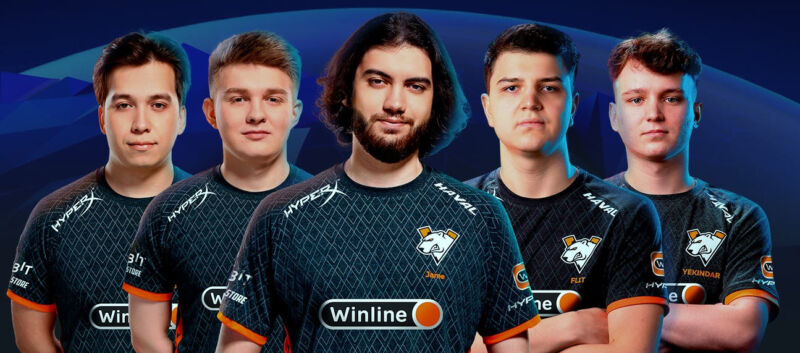Haskell Programming Language – How to Install and Use Haskell Tutorial
John Romero releases new Doom II map to “support the Ukrainian people”
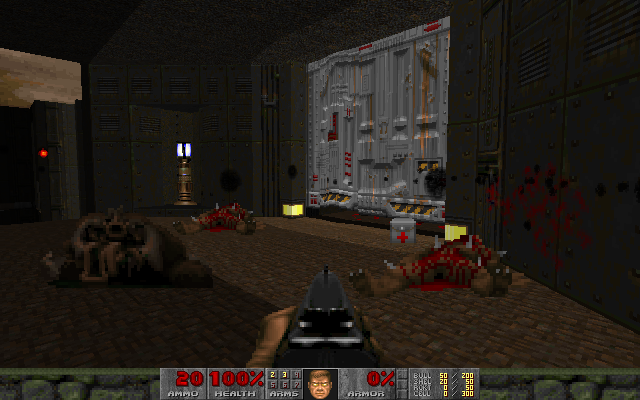
All screens in this article were captured from a GZDoom instance running “One Humanity,” currently on sale for €5 with all proceeds going to charity. (Yes, I opted for IDDQD. You’ll have to wait for another day to see my Nightmare difficulty speedrun without cheats.) (credit: John Romero)
In a surprise treat for ’90s first-person shooter fans, Doom series co-creator John Romero emerged this week with a brand-new map for the 1994 classic Doom II. While it’s priced somewhat high for this kind of content—€5 for a single old-school map—there’s a good reason.
Romero makes clear in the release’s template file that this WAD’s sale is intended to “raise funds to support the Ukrainian people.” It can be purchased at his personal shop site, where he says all proceeds will go toward two humanitarian organizations: the Ukrainian Red Cross and the UN Central Emergency Response Fund. (On the non-charity front, Romero’s store also sells a bunch of Doom-era goodies.)
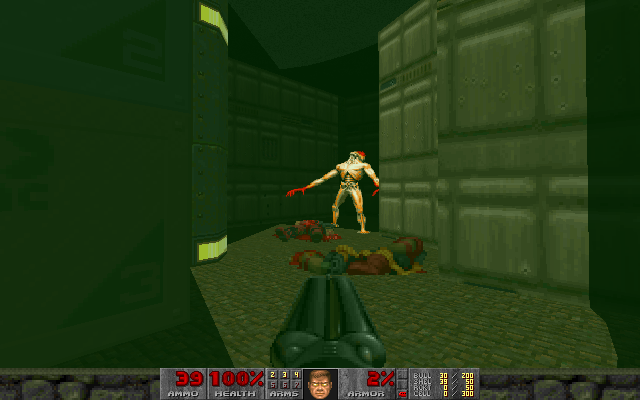
Romero makes clear pretty early on that we’re in Doom II territory, not Doom 1. (credit: John Romero)
One day after its Wednesday launch, the download was updated to add much of the same ReadMe information found in his 2019 Doom 1 map pack, Sigil, that explains to newcomers how to easily get the new map working in either Windows or MacOS. (As I found in my own casual testing, the same instructions do not work on Steam Deck, whose semi-closed Arch Linux implementation currently requires a dive into its command line.) To play Romero’s new map, “One Humanity,” you’ll need an original retail Doom II installation (which comes as part of the newest Doom II version on Steam and GOG), on top of which you can apply a source port like GZDoom.
Samsung responds to app-throttling discovery, promises to ship an off switch

Enlarge / The Galaxy S22 Ultra. It has a pen. (credit: Samsung)
Samsung has responded to reports that it is throttling thousands of apps on the Galaxy line of smartphones.
With the launch of the Galaxy S22, users found the packed-in “Game Optimizing Service” contained a list of approximately 10,000 apps that were being throttled. This list is basically every popular, well-known app you can think of, covering everything from games to core Samsung apps like the home screen. The only apps the service seemingly didn’t target were benchmark apps, which means benchmark ratings are inaccurately reporting how much power the most-used apps have access to. Modifying a benchmark app like Geekbench to be disguised as a normal app leads to CPU scores dropping as much as 46 percent. The new Galaxy S22 isn’t the only smartphone with this throttling feature; it goes back as far as the Galaxy S10.
Samsung gave a statement to The Verge today, saying, “We value the feedback we receive about our products and after careful consideration, we plan to roll out a software update soon so users can control the performance while running game apps.” The spokesperson continued, “The Game Optimizing Service (GOS) has been designed to help game apps achieve a great performance while managing device temperature effectively. GOS does not manage the performance of non-gaming apps.”
The rat problem in Washington, DC, is so bad, two people got hantavirus

Enlarge / A rat drinks water in a back alley in the Park View neighborhood near a construction site on Saturday, September 10, 2017, in Washington, D.C. (credit: Getty | The Washington Post)
Many people might already think of the nation’s capital as a political rat’s nest, teeming with rat-related features, like underground networks and crowded backrooms where any faint smell of betrayal could send lawmakers scurrying. But Washington, DC, is also a den of literal rats. And it’s creating a concerning risk of viral spillover for residents.
In a report released Thursday by the Centers for Disease Control and Prevention, DC health officials ratted out the first two known cases of hantavirus spillover in the city. The virus festers quietly in rats and other rodent populations, but in humans it can cause potentially deadly respiratory and hemorrhagic diseases. Humans pick up the infection by direct contact with rodent urine or nest dust or by breathing in aerosolized viral particles from urine, droppings, or saliva. There’s also the possibility that the virus can spread from rat bites, but this is less common. Once in a human, the virus almost never jumps from human to human.
Fortunately for DC residents, the type of hantavirus found in the city is one of the milder types: an “Old World” hantavirus called the Seoul virus. Old World hantaviruses cause a disease called Hemorrhagic fever with renal syndrome. HFRS can start out like a generic infection with fever, chills, nausea, and headache. But it can progress to low blood pressure, acute shock, vascular leakage, and acute kidney failure, the CDC notes. The severity of HFRS varies by which hantavirus you catch, but fatality rates can reach up to 15 percent. The Seoul virus is one of the milder forms, with a fatality rate of only about 1 percent. As such, in both of the cases reported by DC health officials, the infected individuals recovered.
If Dilophosaurus ran the 100-meter against Usain Bolt, who would win?
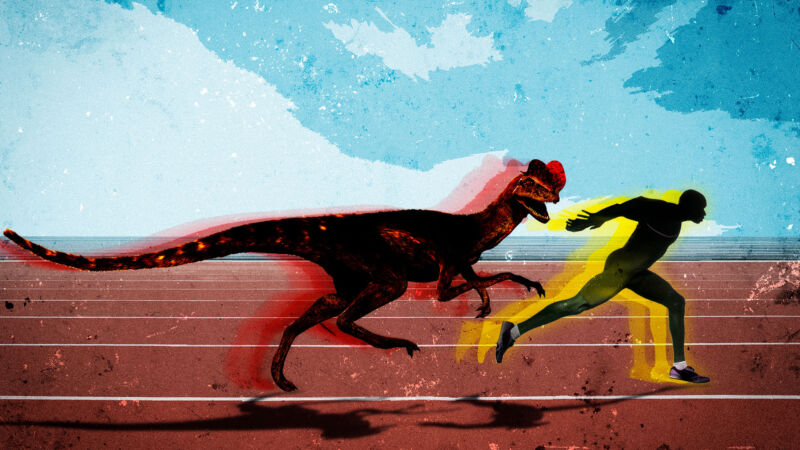
Enlarge / University of Toledo physicist Scott Lee came up with the exercise to inspire undergrads in his introductory physics course. (credit: Aurich Lawson | Getty Images)
The early Jurassic dinosaurs known as Dilophosaurus proved to be scene stealers in the 1993 blockbuster Jurassic Park, taking out a full-grown man who thought they were just cute, harmless critters—right until they disabled him by spitting venom into his eyes. But how would Dilophosaurus fare in a different kind of contest: racing the 100-meter dash against eight-time Olympic gold medalist Usain Bolt? It wouldn’t be much of a fight—Bolt would easily beat the 900-pound beast by a good two seconds.
That’s the conclusion of physicist Scott Lee of the University of Toledo, based on a physics exercise he developed for his undergraduate students in introductory physics. Lee has loved dinosaurs ever since he was a kid, when he would hunt for fossils with his family, and he has brought that love into the classroom. “One big issue in physics education is to generate student enthusiasm for the course material,” he said. “These dinosaur problems really spark a lot of interest among the students.” He described his pedagogical process in a new paper published in The Physics Teacher.
Bolt made his mark on history in the 2008 Summer Olympics in Beijing, when he broke his own world record in the 100-meter final, blazing past the competition to win the gold with a time of 9.69 seconds. He was so far ahead of the pack—the silver medalist finished in 9.89 seconds—that Bolt visibly slowed down in celebration right at the finish. Had he kept running at full speed, Bolt would have finished in 9.52 seconds, his coach estimated. This conclusion was borne out by an analysis by physicists at the University of Oslo, whose calculations predicted a finish in about 9.55 seconds.
How to Install Python 3 on Mac and Update the Version with Pyenv – MacOS Homebrew Command Guide
ICANN won’t revoke Russian Internet domains, says effect would be “devastating”

Enlarge (credit: Getty Images | Yuichiro Chino)
Ukraine’s request to cut Russia off from core parts of the Internet has been rejected by the nonprofit group that oversees the Internet’s Domain Name System (DNS). CEO Göran Marby of ICANN (Internet Corporation for Assigned Names and Numbers) said the group must “maintain neutrality and act in support of the global Internet.”
“Our mission does not extend to taking punitive actions, issuing sanctions, or restricting access against segments of the Internet—regardless of the provocations,” Marby wrote in his response to Ukraine Vice Prime Minister Mykhailo Fedorov. “ICANN applies its policies consistently and in alignment with documented processes. To make unilateral changes would erode trust in the multi-stakeholder model and the policies designed to sustain global Internet interoperability.”
Ukraine on Monday asked ICANN to revoke Russian top-level domains such as .ru, .рф, and .su; to “contribute to the revoking for SSL certificates” of those domains; and to shut down DNS root servers in Russia. Fedorov argued that the requested “measures will help users seek for reliable information in alternative domain zones, preventing propaganda and disinformation.”
Sony and Honda are teaming up to make a range of electric vehicles

Enlarge / The Vision-S 02 (left) and Vision-S 01 (right) are a pair of concept EVs developed by Sony. Now, the company is joining up with Honda to build a range of EVs. (credit: Sony)
On Friday, we learned that Honda and Sony are teaming up for a strategic alliance. The two companies are creating a new joint venture that will design and sell a range of high-end electric vehicles and mobility services. The first EV is due to go on sale in 2025.
We got our first real glimpse of Sony’s automotive ambitions when the consumer electronics giant used the 2020 Consumer Electronics Show in Las Vegas to show off a concept car called the Vision-S. This remarkably polished car was a four-wheel showcase for Sony’s sensor tech and had an interior that made it easy to consume Sony’s digital entertainment content.
Sony worked with traditional automotive suppliers like Bosch, Continental, and Magna Steyr on the concept, and we saw it again the following year via videos of the Vision-S testing in Austria. Magna Steyr is well-known in the auto industry for its ability to contract-manufacture vehicles for automakers, including BMW, Jaguar, Mercedes-Benz, and Toyota. Its factory is in Graz, Austria.
Esports leagues bar Russian-owned teams, cancel regional events
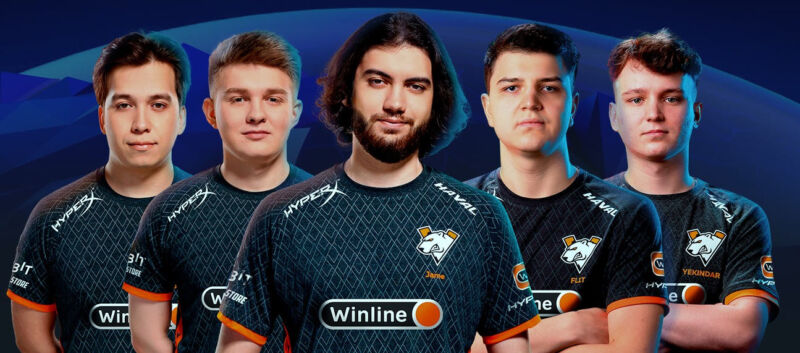
Enlarge / Members of Virtus.pro will be able to participate in ESL events individually but not as representatives of the Russian-owned team. (credit: Virtus.pro)
Some major esports leagues are following the lead of their traditional sports counterparts in banning Russian-based teams and canceling events planned to be held in the region amid Russia’s continuing invasion of Ukraine. But at least one affected team is lashing out at the decision, blaming it on “prejudice” and “the cancel culture.”
On Wednesday, the popular ESL Pro League became the latest to announce it was barring “organizations with apparent ties to the Russian government, including individuals or organizations under alleged or confirmed EU sanctions related to the conflict” from participating in its events. The league stopped short of sanctioning individual players on those teams, though, saying they were “not complicit with this situation” and were welcome to still compete “under a neutral name, without representing their country, organization, or their teams’ sponsors on their clothing or otherwise.”
ESL identified two teams that would be initially affected by these sanctions, Virtus.pro and Gambit. The former is owned by ESFORCE, which is in turn owned by a partnership between Russian oil company Gazprom, insurance company Sogaz, and defense company Rostec, all of which have faced sanctions from the international community.





